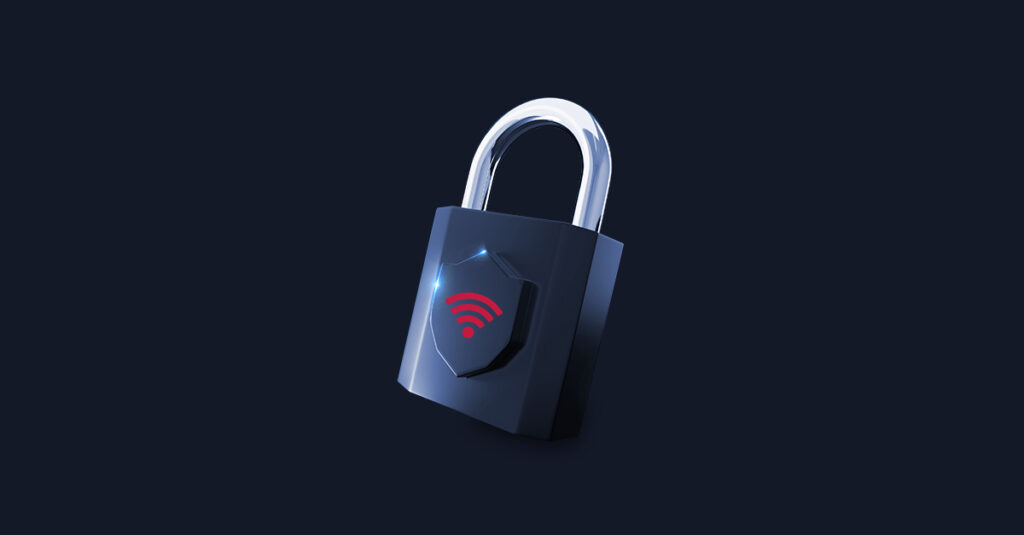
What Kind of Security Do I Need on My Wi-Fi Network?
2 commentsWhy is Wi-Fi security important? You’re likely already familiar with the importance of setting unique, strong passwords for all of your online accounts to help protect you from hacking and isolating the damage if you’re the victim of a data breach. But setting strong passwords for your online accounts isn’t enough—you also need to make sure the infrastructure you use to access the Web is secure.
It might seem like your home Wi-Fi network is private and stops at the edge of your property, but that’s not quite how it works. You know how when you connect a device to your own Wi-Fi network, you see other networks listed? Those are all in range of your device, meaning your network is likely in range for a lot of folks, some of whom might want to exploit that. To put it simply, if you don’t invest some time in your home network security, you open yourself to risk.
Risks of weak Wi-Fi network security
While there are many types of attacks on network security, one tactic to watch out for is the man-in-the-middle attack. A man-in-the-middle attack creates a false network that “looks like” yours to intercept your traffic—think login data, private communications and other sensitive information.
Check out this great guide for signs your router has been hacked. One huge clue: If your internet is suddenly punishingly slow or behaving strangely, it’s a good sign something is up, and you need to reset—and maybe replace—your router and beef up your Wi-Fi security settings.
Remember your Wi-Fi manager
In a previous post, we outlined some benefits of managing your Wi-Fi network. Wi-Fi management allows you to understand what devices have access to your network, perform simple maintenance and keep yourself secure, while enabling the convenience of wireless connections. Logging into your Wi-Fi/router manager provides access to settings related to passwords, security, guest networks and even networking speeds.
To find your Wi-Fi manager, Google both “[your ISP] Wi-Fi manager” and “[your router brand] Wi-Fi manager.” Contact your ISP customer support or look at your router’s manual. (Tip: Try searching “[model name] manual”—plenty of websites house PDF copies of all sorts of instruction booklets!)
Update your router credentials and Wi-Fi network name and password
There are a couple of passwords involved in accessing the Web from one of your devices. First, there is a password to manage your router itself. Log in to your router manager and change its factory-set password, as routers often have default values that someone could guess. Second, to access your network, you need a password, or network security key, which you should also customize using the rules of a good password. Don’t forget to set up a custom network name, too! If you use defaults and don’t change these values, you leave easy openings for bad actors to exploit.
Check your router’s security protocol
While you’re updating your passwords above, check that your router is using modern encryption settings. Your router may use a range of potential wireless security protocols, but not all of them are considered safe. WPA3 (Wi-Fi Protected Access 3) or WPA2 are the best settings right now. WEP (Wired Equivalent Privacy) is now considered relatively easy to crack and should be avoided. Some routers will allow you simply to switch from using WEP to a more modern protocol like WPA2 by adjusting a setting. If your router only supports WEP or WPA (without a number), it’s time to get a new router with a modern protocol. While WPA3 is the most current standard, WPA2 is still considered secure.
Update your router firmware
In addition to minding the alphabet soup of security protocols, it’s important to make sure your router’s firmware is up to date. Firmware is low-level software that helps make sure your device can run, and it’s manufacturer specific. Keeping your firmware updated addresses known security vulnerabilities and can even provide performance bumps. Usually, the router supplied by your internet service provider is automatically updated, and if you buy your own, you may have to update it yourself.
Create a guest network
Guest networks may seem like overkill: Your house isn’t a library or a coffee shop! Yet creating a guest network is a simple step that helps protect your home Wi-Fi by creating a wall between your own devices and those of visitors. This reduces risks associated with devices you (or your immediate family) do not personally control. You can easily create, rename and re-credential a guest network from your Wi-Fi/router manager.
Network security can be intimidating, but it doesn’t have to be. The above tips will help shield you from many of the risks of the Web today without spending extra money or much extra time. For just a few minutes, you can take advantage of equipment and features you already have, which can save a huge headache down the line.




I got our router from Frontier how do I get another updated one?
Hi Elaine, this is something we can assist you with. If you’re having trouble with your router we would advise reaching out to our technical support teams by chat or phone. Contact info is available here: https://fybr.to/3ef8YJV. We’re also available to help out on Social Media. Links are below. ^Michael